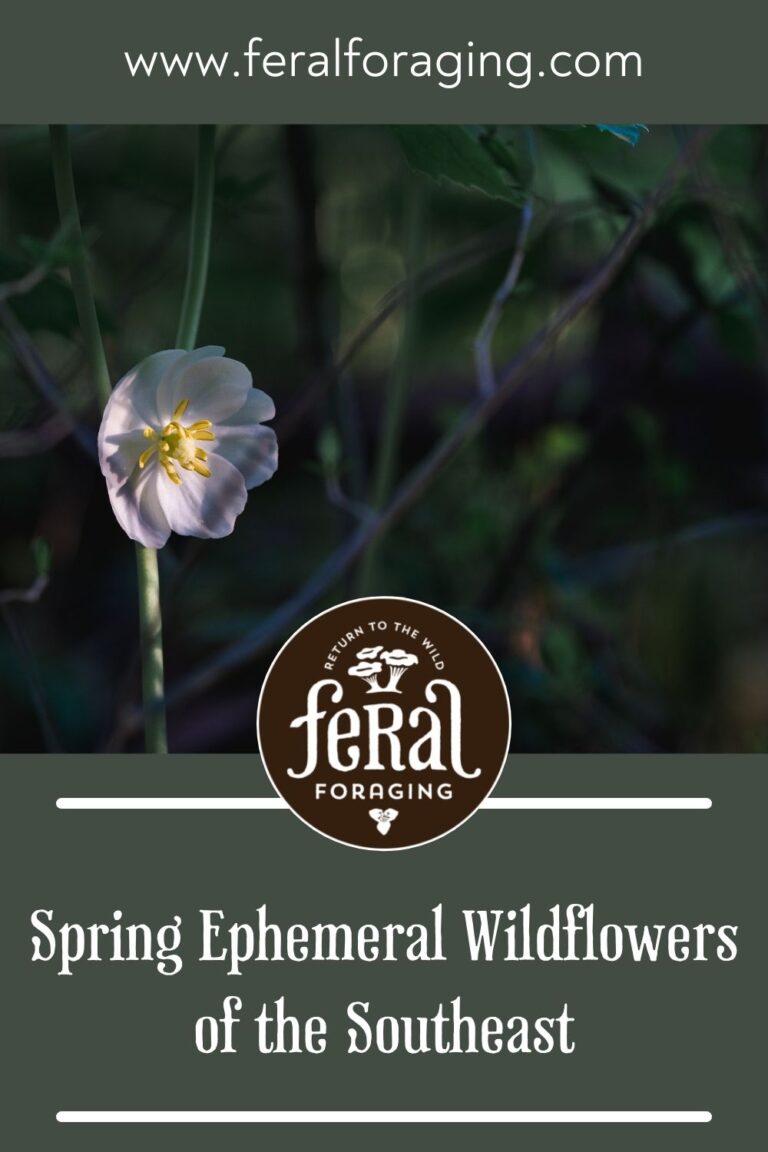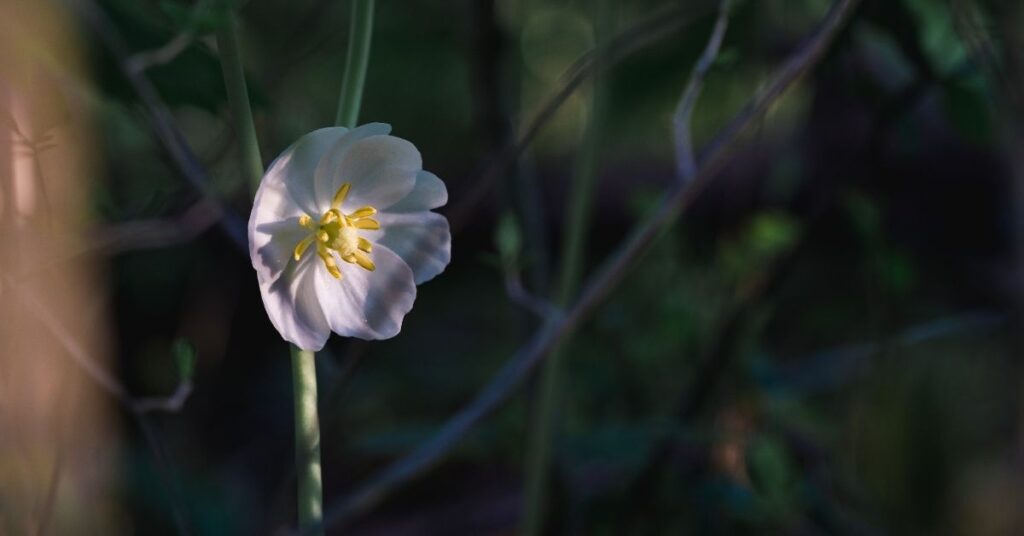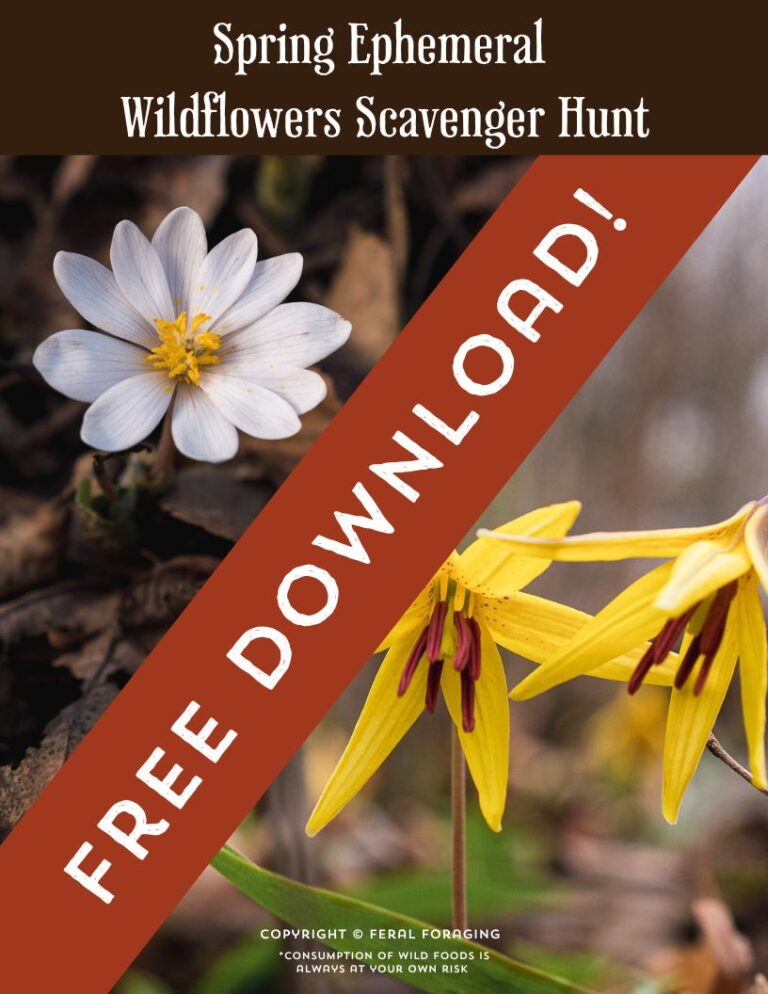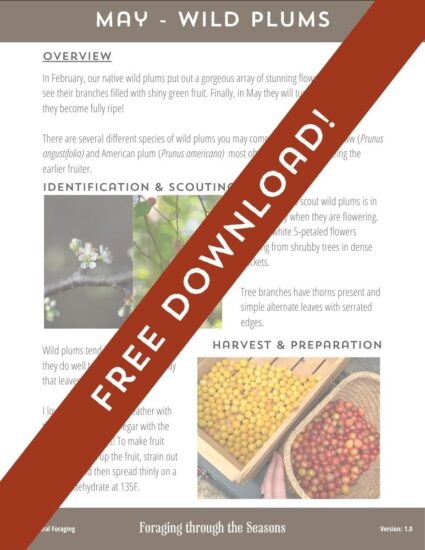What is a spring ephemeral wildflower?
A spring ephemeral wildflower is a type of plant that blooms briefly in early spring, often before the leaves of deciduous trees have fully emerged. These flowers take advantage of the warm sunshine and moist soil that is available before the trees shade the forest floor. Some of the most well-known spring ephemerals include bloodroot, trillium, and Dutchman’s breeches.
Where can I find spring ephemeral wildflowers?
Spring ephemeral wildflowers can be found in many different types of environments, including deciduous forests, meadows, and fields. They typically grow in areas with moist, well-drained soil and partial to full shade. Some of the best places to look for spring ephemerals include:
- Woodlands with a rich understory of native shrubs and groundcover
- Old-growth forests with large trees and a diverse understory
- Forested areas along streams or near other bodies of water
- Abandoned farmland or meadows that have been left to natural succession
It’s also worth noting that some spring ephemerals, such as trillium, can be found in more than one type of habitat. Additionally, the specific species of spring ephemerals that can be found in a given area will depend on the local climate and geology.
In this article, we will investigate spring ephemeral wildflowers that occur in the Southeast of North America!
The range of spring ephemeral wildflowers covered in this article mainly includes:
- Alabama
- Tennessee
- Georgia
- North Carolina
- South Carolina
- Kentucky
- Virginia
- West Virginia
- Mississippi
- Missouri
- Arkansas
As well as others across Eastern North America to varying degrees of overlap.
Common Spring Ephemeral Wildflowers of the Southeast
Spring Ephemeral Wildflower Examples
Camissia scilloides – Wild Hyacinth
A native wildflower in North America that produces spikes of blue, star-shaped flowers in the spring. It is commonly found growing in woodlands, meadows, and along streams.
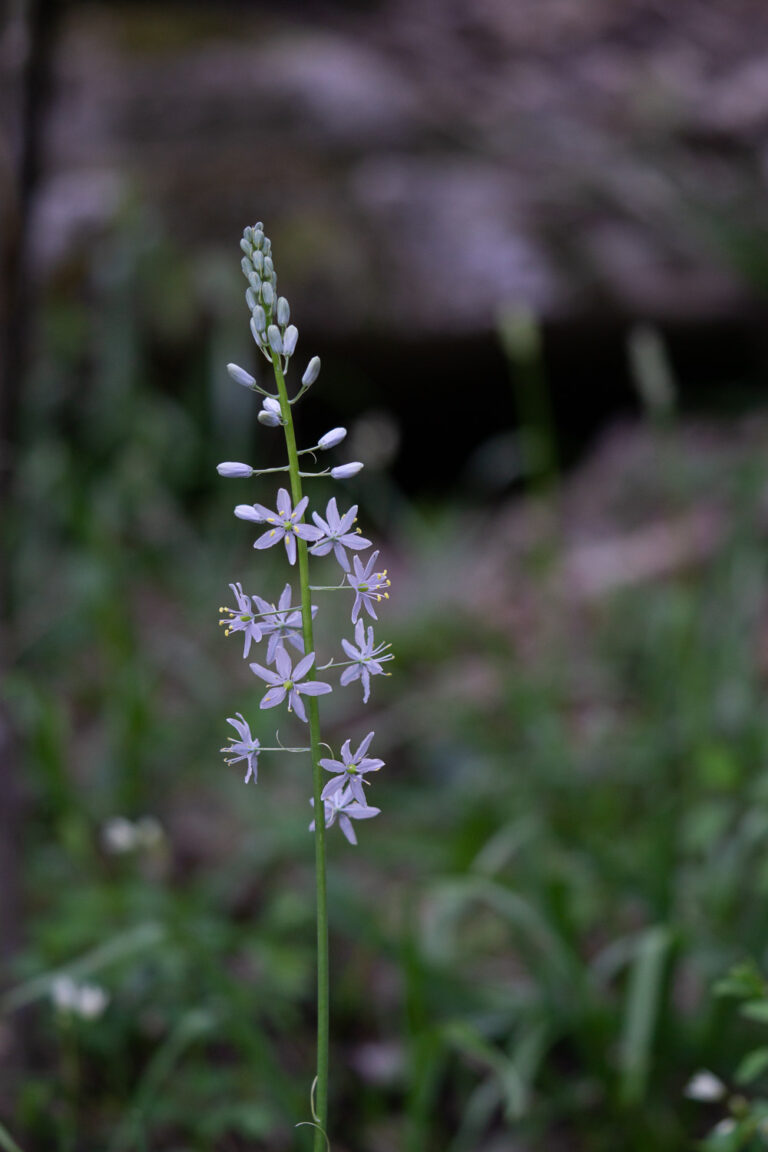
Cardamine concatenata – Cut-Leaved Toothwort
Cut-Leaved Toothwort is a low-growing, delicate wildflower that produces spikes of white or pink flowers. The plant is commonly found in moist woods and along streams, and its leaves have a distinctive, toothed appearance.
I eat the aerial parts of this plant and enjoy them for their horseradish-like flavor!
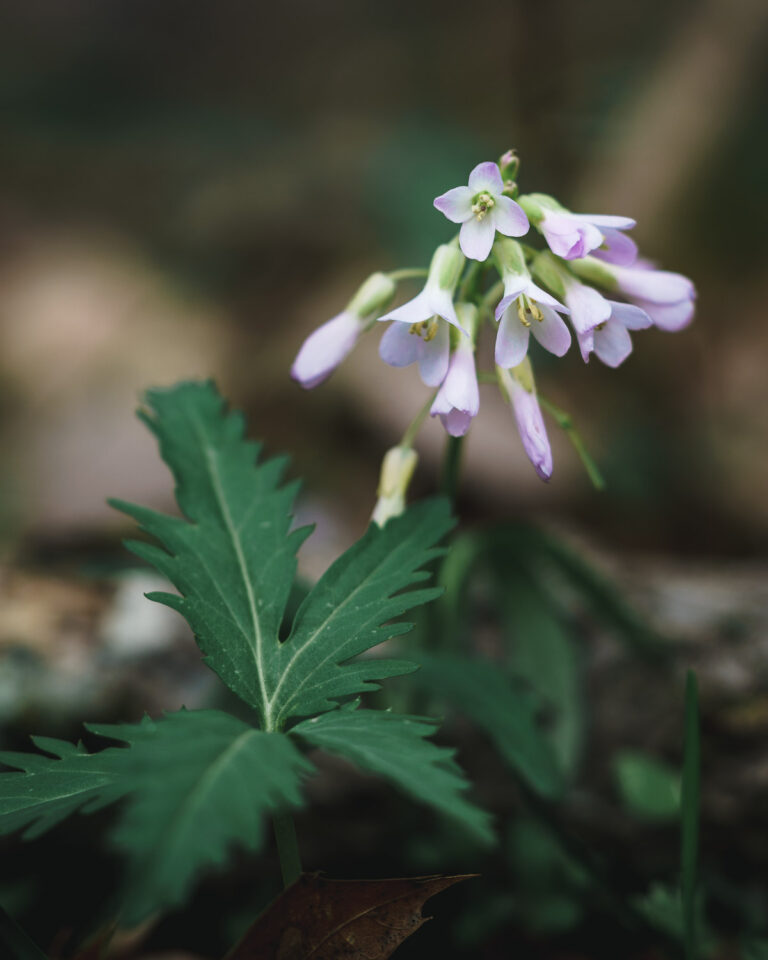
Claytonia virginica – Spring Beauty
A small, delicate wildflower that blooms in the early spring. It has small, white, or pink flowers held above a carpet of bright green leaves. This flower shows foragers where to find its tiny edible tubers underground. They aren’t huge, a half-dollar-sized tuber would be on the bigger side.
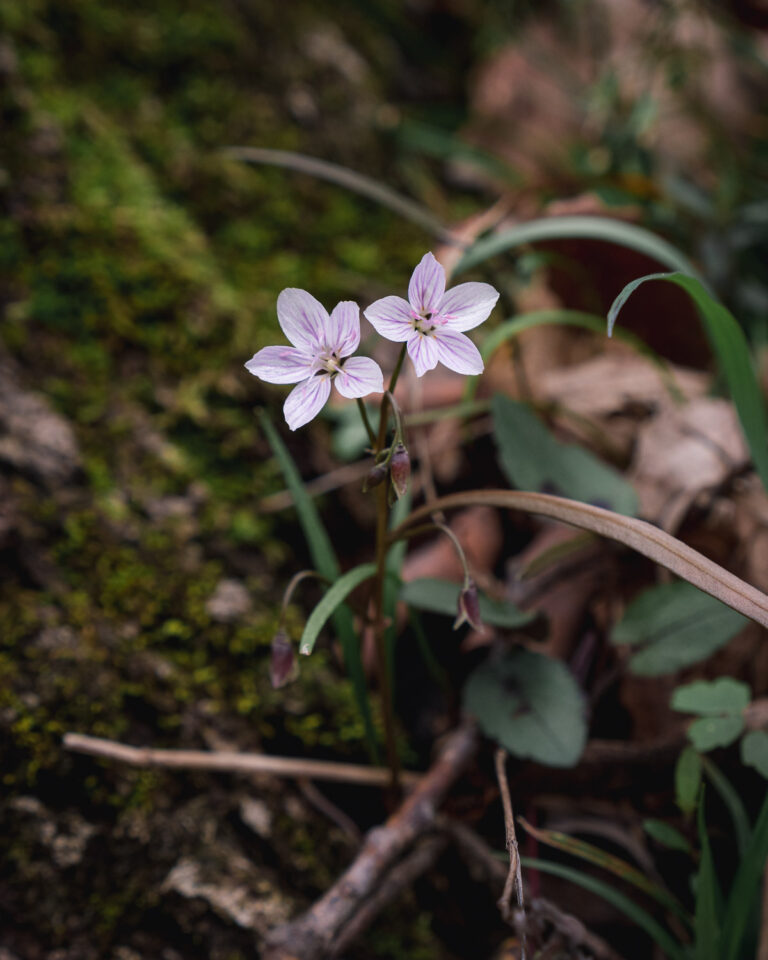
Enemion biternatum – False Rue Anemone
False Rue Anemone is similar in appearance to Rue Anemone, but has flowers with five petals instead of many and deeper leaf sinuses. Rue Anemona is also detailed on this page. The plant is commonly found in moist woods and along streams.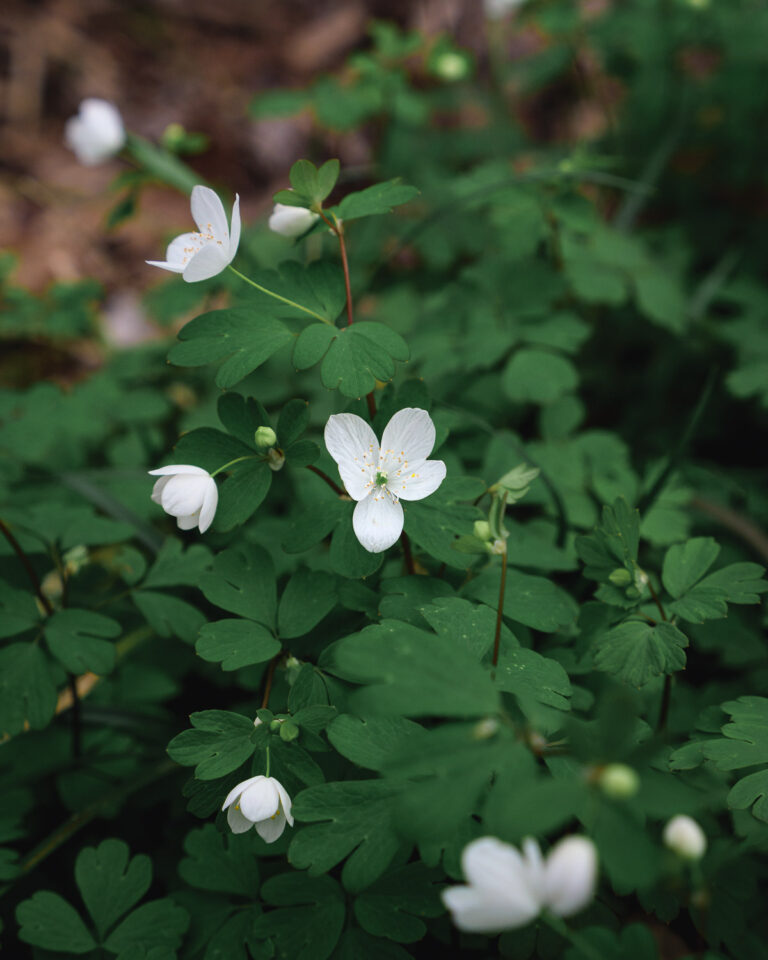
Erythronium – Trout Lily
A native wildflower in North America produces delicate, yellow, or white flowers in the spring. It is commonly found growing in woodlands and along streams. The tiny edible tubers and shoots are edible, but not of any caloric or flavor significance in my opinion.
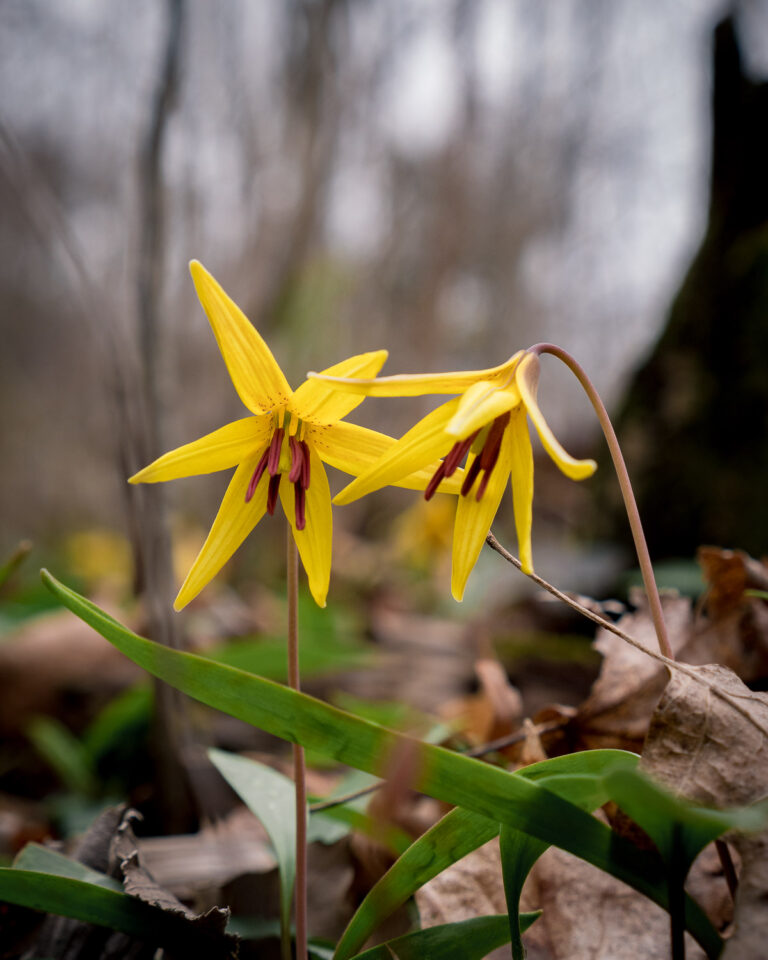
Geranium carolinianum – Carolina Geranium
A native wildflower in North America. It typically blooms in the spring with delicate pink or white flowers that are about 1 inch wide.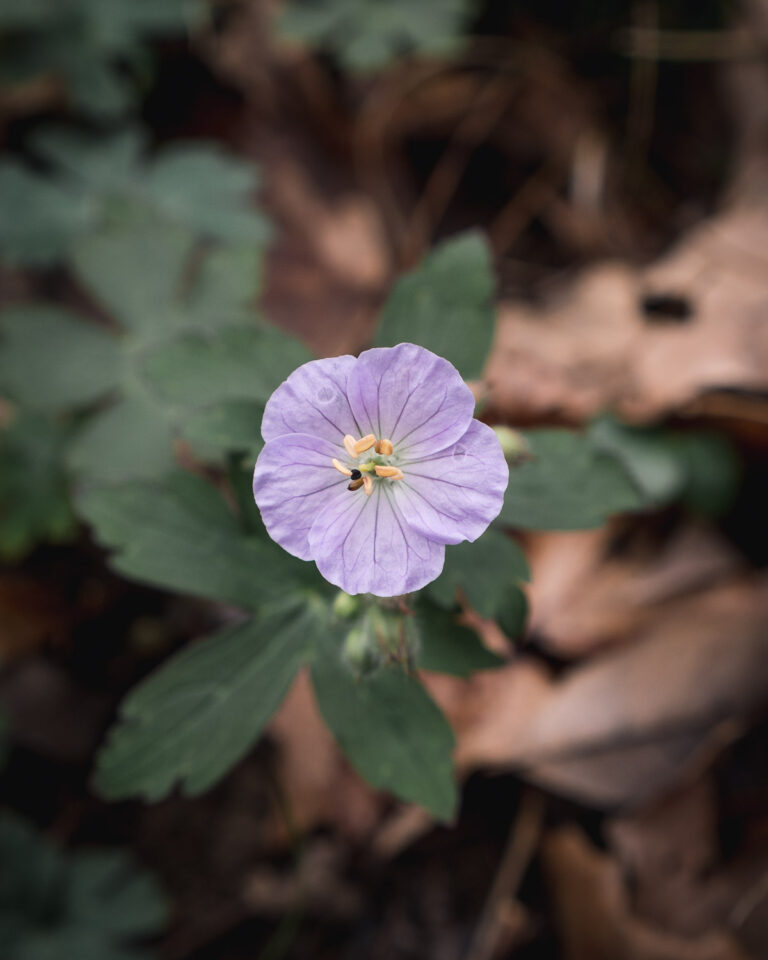
Glandularia canadensis – Rose Vervain
A North American native plant that produces spikes of small, bright pink or purple flowers in the spring. It is a common wildflower in many parts of the country and can be found growing in woodlands, meadows, and along roadsides.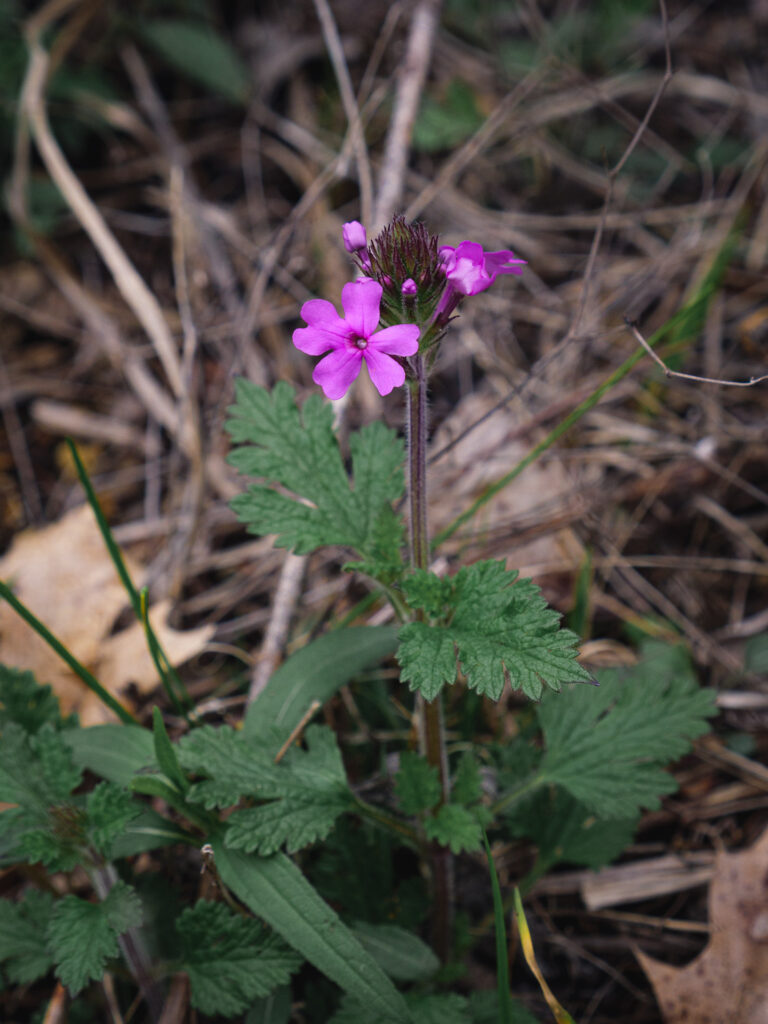
Hepatica acutiloba – Sharp Lobed Hepatica
A small, low-growing wildflower that produces delicate, pink, blue, or white flowers on short stems. The plant prefers well-drained, moist soils and is often found in rich woods or along streams.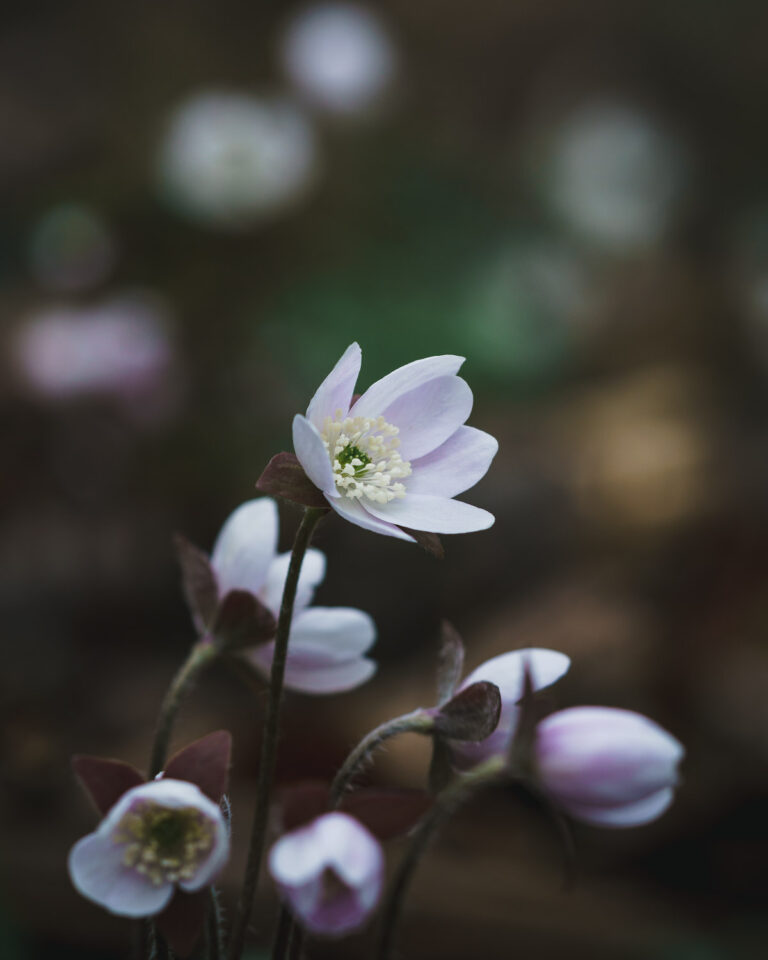
Mertensia virginica – Virginia Bluebells
A native wildflower in North America that produces spikes of delicate, blue or pink bell-shaped flowers in the spring. It is commonly found growing in woodlands, meadows, and along streams.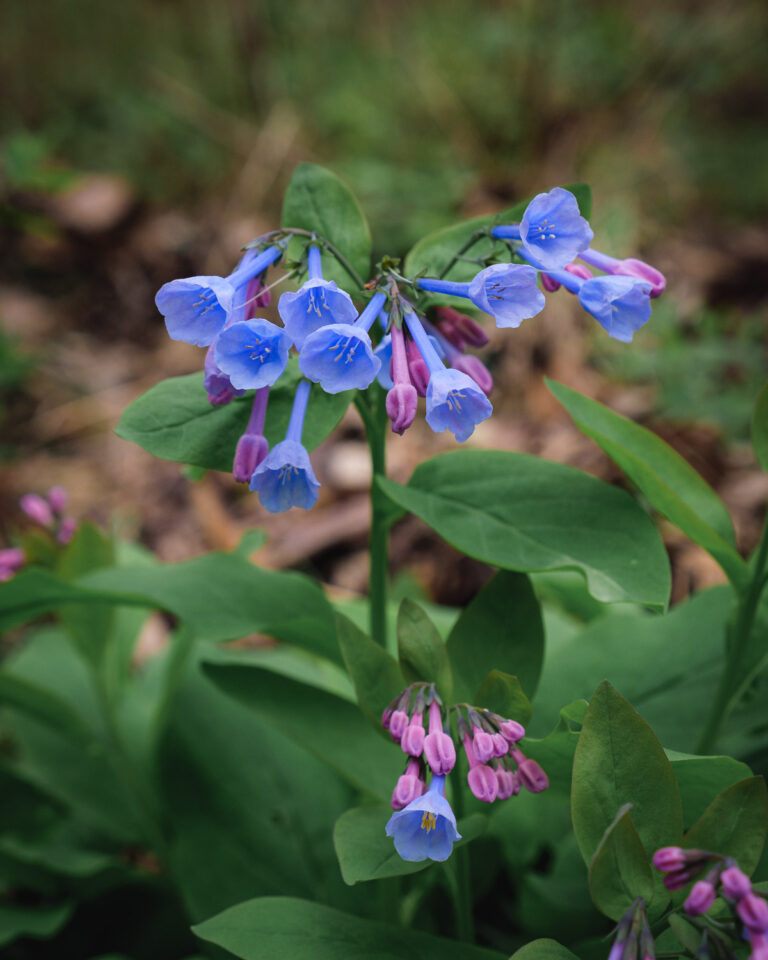
Nothscordum bivalve – Crow’s Poison
A small, bulb-forming wildflower that produces spikes of delicate, white or yellow bell-shaped flowers. The plant prefers moist, shaded environments and is often found growing along streams or in the understory of woodlands. This plant can sometimes be mistaken for plants in the onion family which would not be good as Crow’s Poison is, well… poisonous! You can easily distinguish them from the fast that onions always have a characteristic onion aroma in their plant parts. No onion smell, no onion.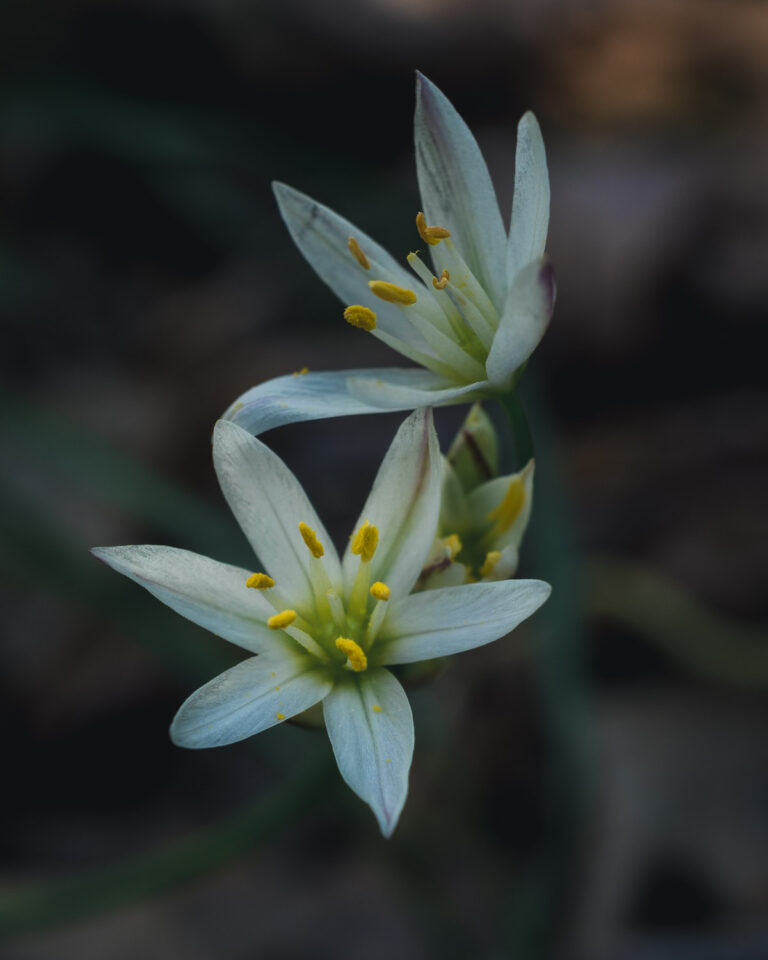
Phacelia tanacetifolia – Purple Phacelia
A wildflower that is native to North America and grows in a variety of habitats, including meadows, forests, and along roadsides. Its bright purple flowers are tubular and attract a variety of pollinators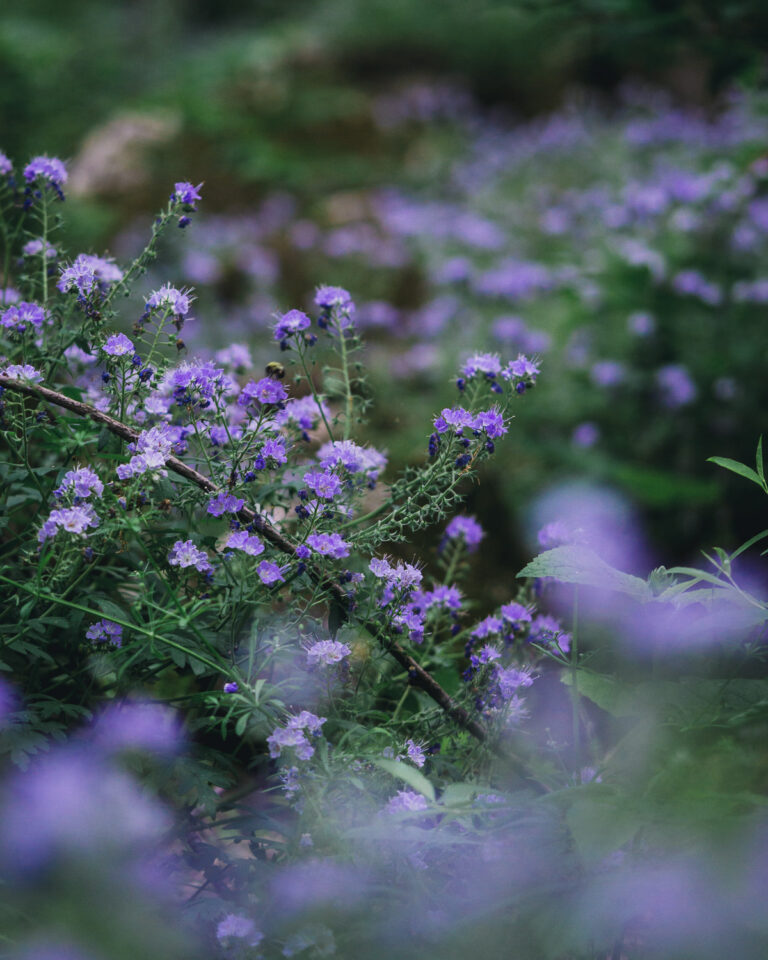
Phlox divacarta – Woodland Phlox
Woodland Phlox is a clump-forming wildflower that produces spikes of fragrant, blue, pink, or white flowers. The plant is commonly found in woods and along streams and is one of the most popular spring wildflowers.
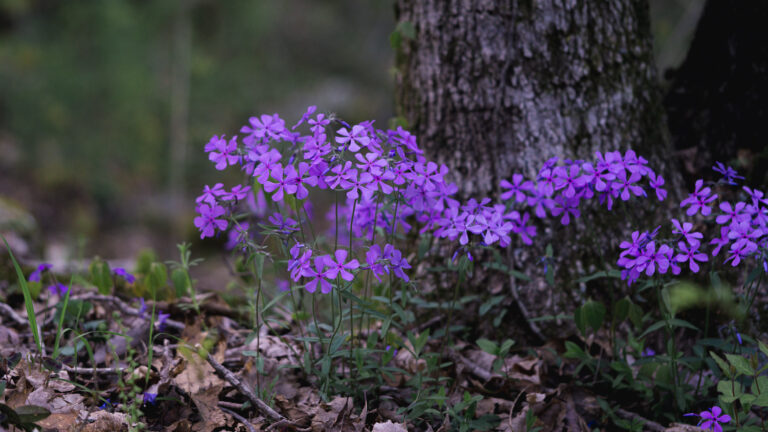
Podophyllum peltatum – Mayapple
Mayapple is a low-growing, herbaceous perennial that produces a single, large, umbrella-like leaf and a single, white, cup-shaped flower. The plant is commonly found in woods and along streams and is easily recognized by its unique foliage. Its fruit will mature far later in the year and is exceedingly difficult to gather before other woodland creatures get to it! It tastes very similar to native passionfruit in my opinion.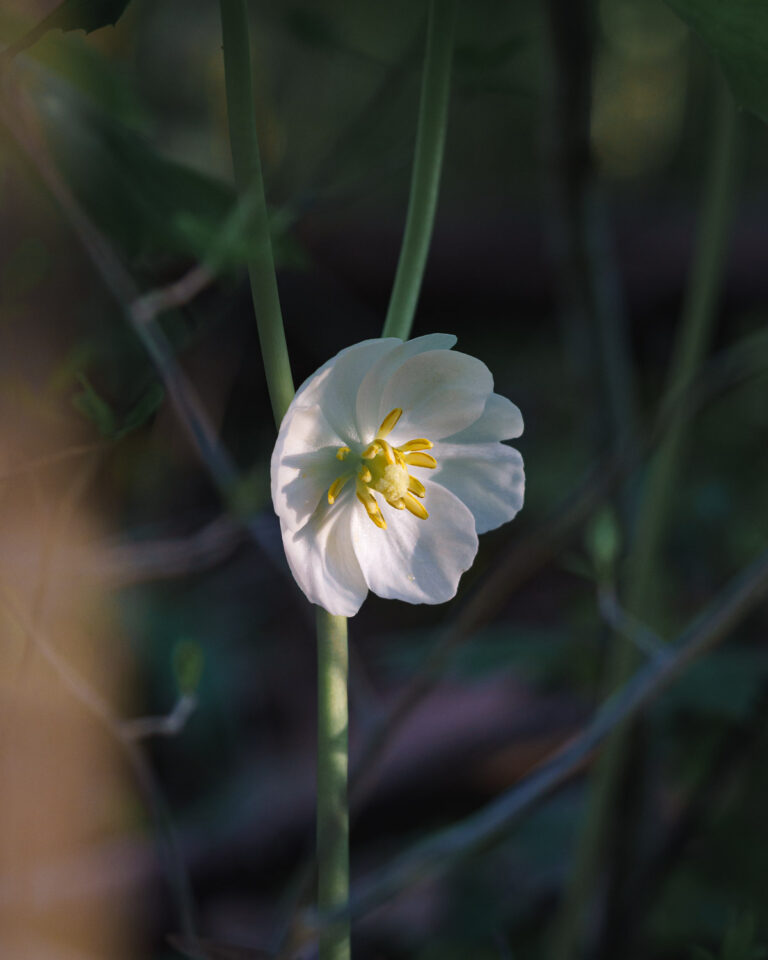
Primula media – Eastern Shooting Start Flower
The Eastern Shooting Start Flower is a low-growing, clump-forming wildflower that produces spikes of star-shaped flowers in shades of blue, purple, and pink. The plant prefers moist, wooded environments and is one of the earliest wildflowers to bloom in the spring.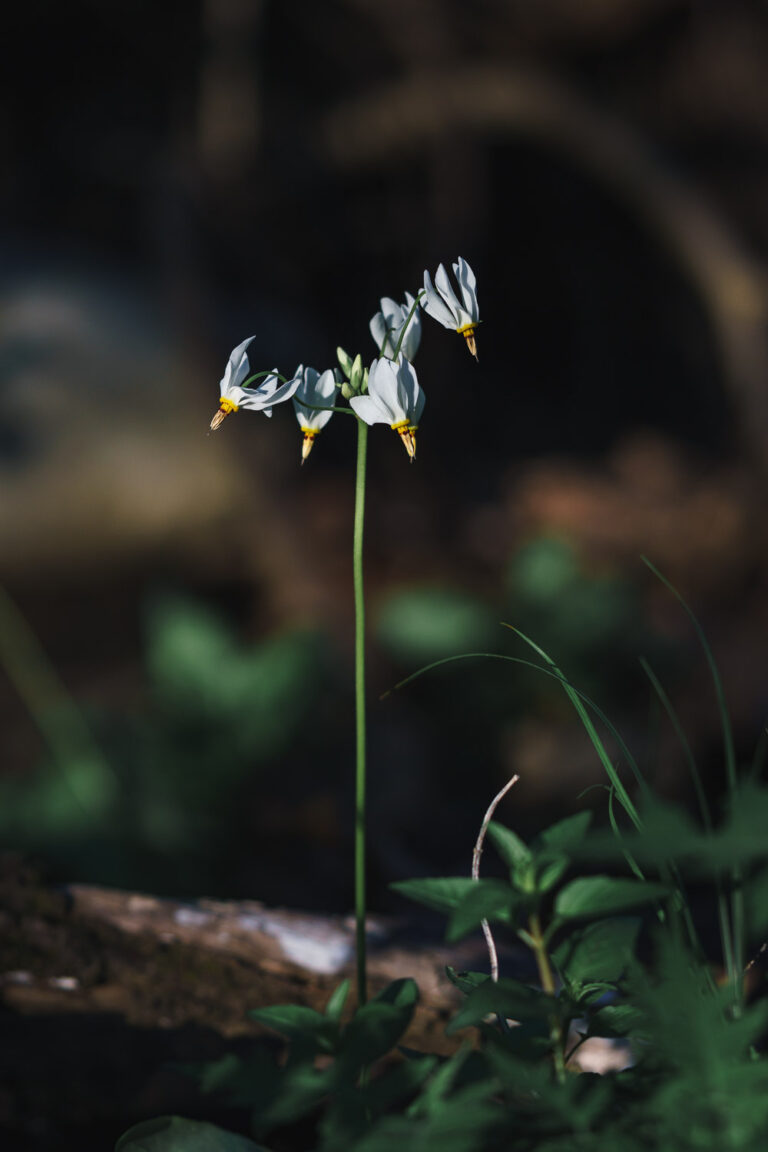
Oxalis violacea – Violet Wood-Sorrel
A native wildflower in North America that produces delicate, five-petaled flowers that are usually violet or pink in color. It is commonly found growing in woodlands and along roadsides. Sorrel plants are edible and have a classic refreshing acidic taste. You’ll see wild food fear-mongering articles telling you how dangerous that this plant is due to the presence of oxalic acid. However, they will often fail to mention that there are many grocery story produce greens that contain significant amounts of oxalic acid as well such as spinach or parsley. If your doctor has told you to avoid spinach and parsley for this reason I would steer clear. Otherwise, I enjoy its delicious leaves and flowers as salad garnishes every year!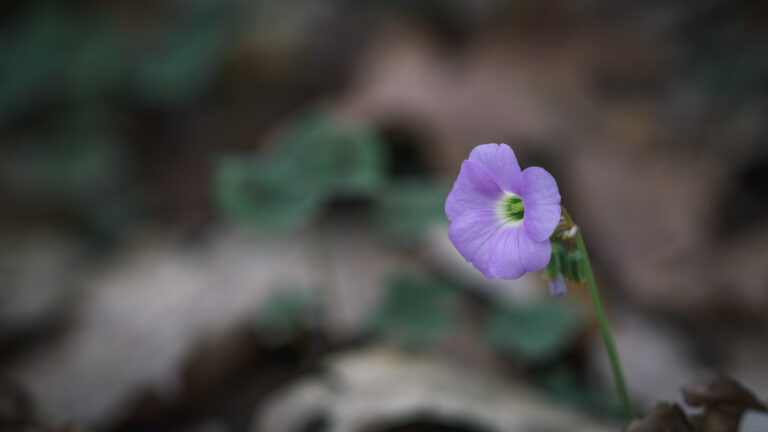
Sanguinaria canadensis – Bloodroot
Bloodroot is a perennial wildflower with a single, showy white flower that rises above a basal rosette of leaves. The plant gets its common name from the red sap that is produced by its roots. It contains the chemical Sanguinarine which is the main component responsible for the red color. Bloodroot typically blooms in early to mid-spring, and its leaves will wither away by late spring.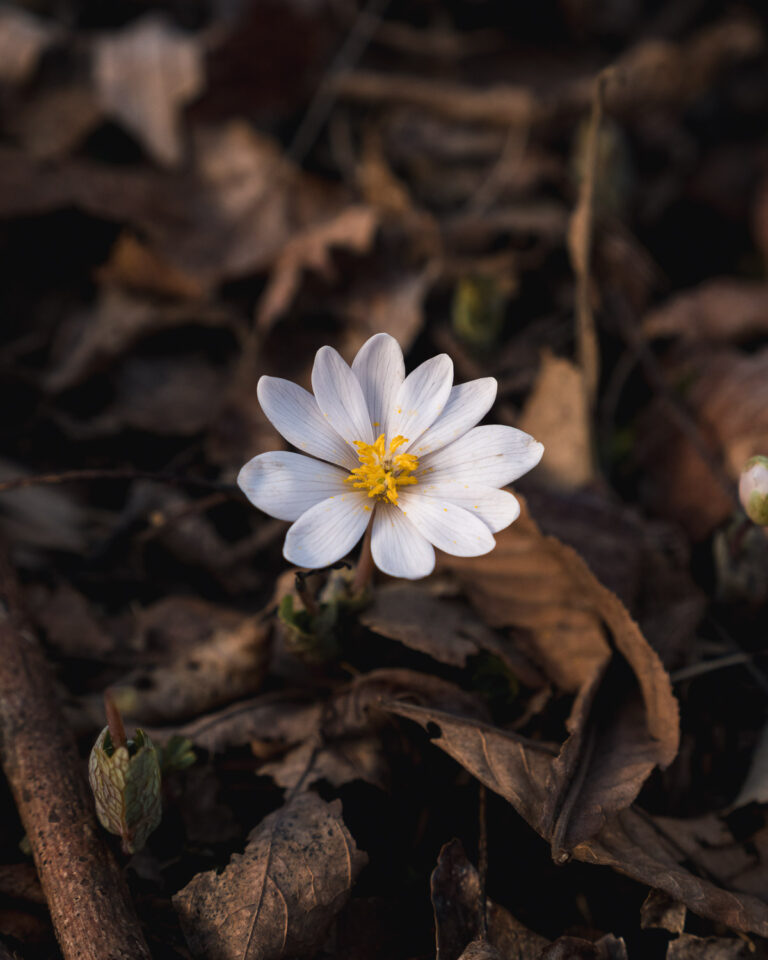
Thalictrum thalictroides – Rue Anemone
Rue Anemone is a delicate wildflower that produces clusters of white or pink flowers on wiry stems. The plant is commonly found in deciduous woods and along streams, and its leaves have a fern-like appearance. We also detail False Rue Anemone in this article. You can see here that True Rue Anemone has shallower leaf sinuses and far more petals per flower.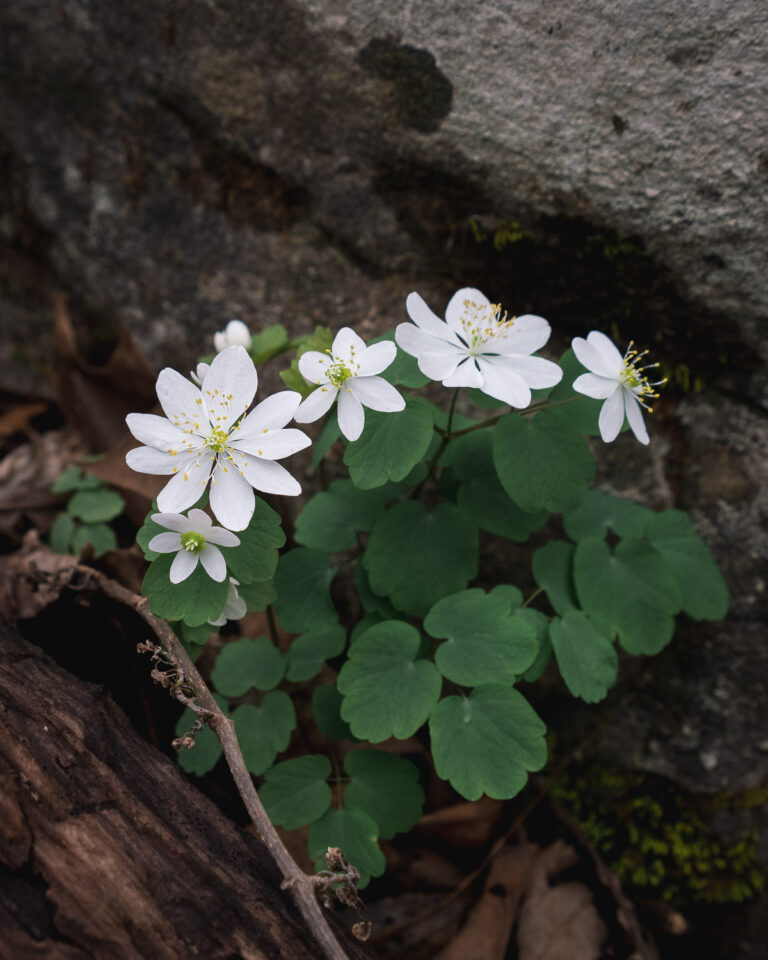
Scavenger Hunt Download
We created a Spring Ephemeral Wildflower scavenger hunt printable checklist. Click the photo to get your copy! Join our Discord channel of like-minded naturalists and show us how many you can find this year!
Thanks for reading! We hope this article was helpful to you and that you get to enjoy the Spring Ephemeral Wildflower season as much as possible!
